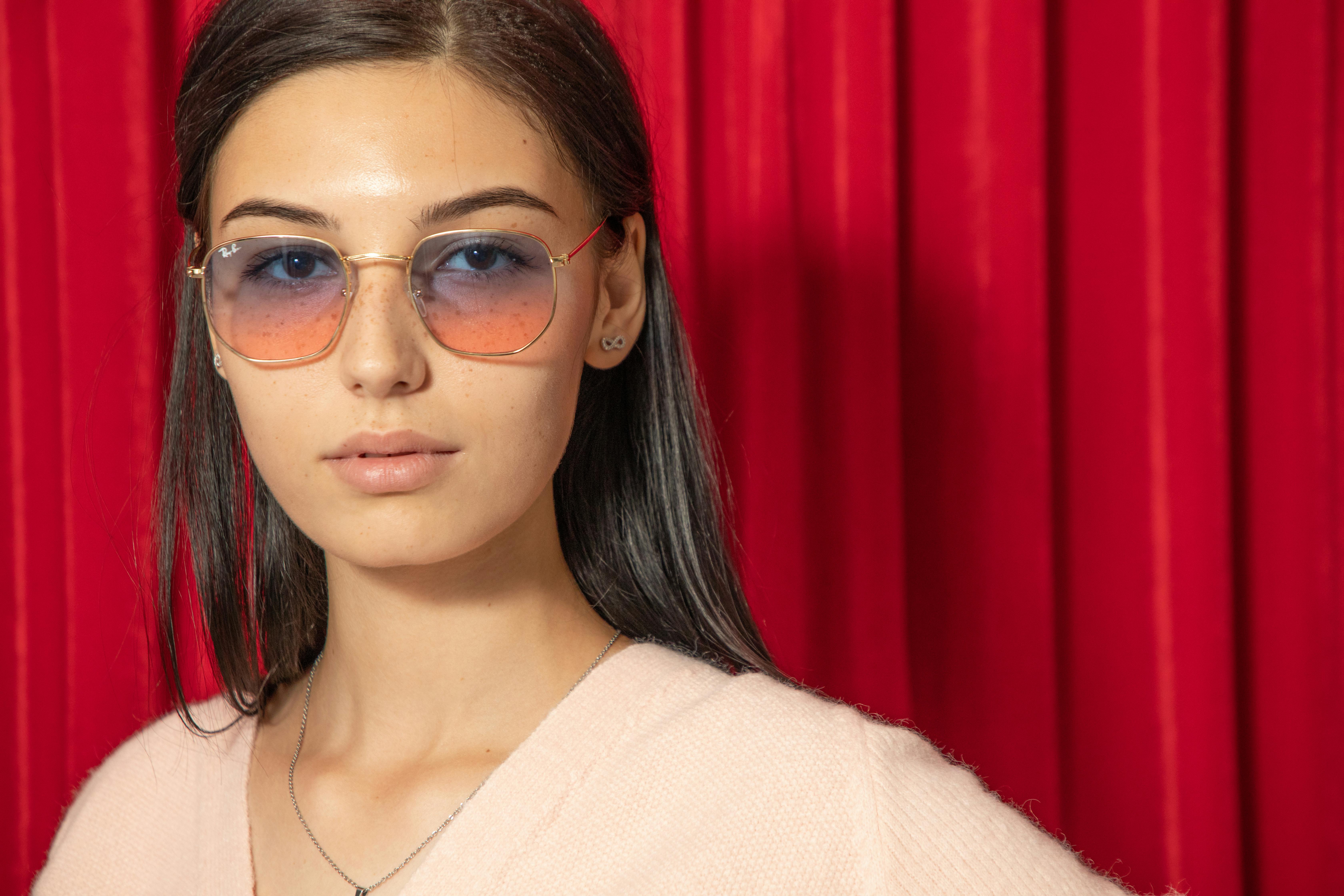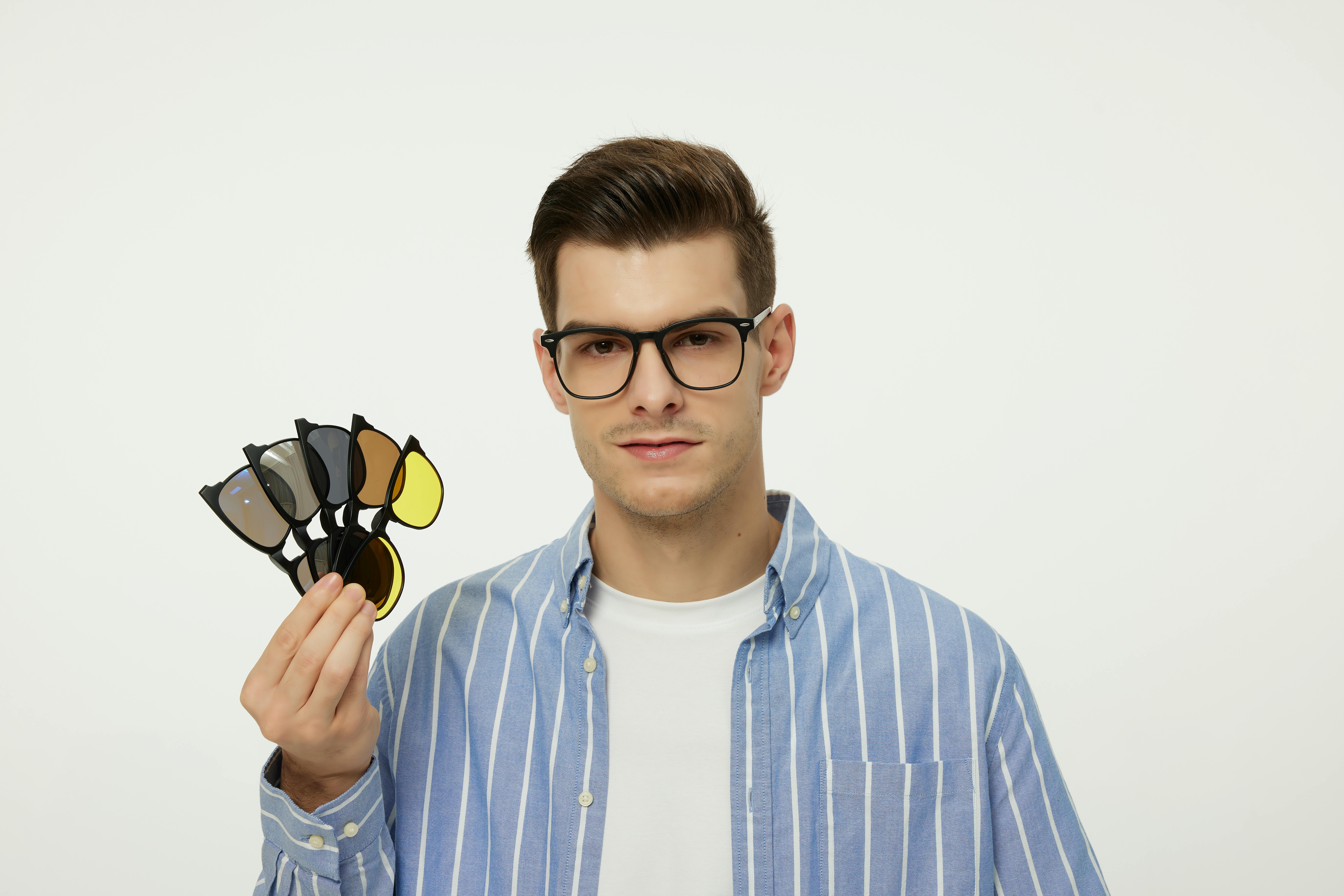Blue Light Glasses vs. Sunglasses: What’s the Difference?
In today’s digital age, our eyes are constantly exposed to screens, sunlight, and artificial lighting. As a result, many of us are looking for ways to protect our eyes and reduce strain. Two popular options are blue light glasses and sunglasses. While both serve important purposes, they are designed for very different situations. Let’s break down the differences between blue light glasses and sunglasses to help you decide which one (or both!) you need.
What Are Blue Light Glasses?
Blue light glasses are specially designed to filter out or block blue light emitted from digital screens, LED lights, and other artificial sources. Blue light is part of the visible light spectrum, and while some exposure is natural (like from the sun), excessive exposure from screens can lead to digital eye strain, headaches, and disrupted sleep patterns.
Key Features of Blue Light Glasses:
Lens Tint: Often clear or slightly yellow-tinted, designed to reduce glare and block blue light without distorting color perception.
Purpose: Primarily used for screen time, such as working on a computer, scrolling on your phone, or watching TV.
Benefits: Reduces eye strain, improves sleep quality, and minimizes headaches caused by prolonged screen use.
When to Wear Blue Light Glasses:
ZAMGIC Classic Retro Photochromic Sunglasses,Blue Light Blocking Glasses.Color Change Lenses for Day and Night.
During work or study sessions on a computer or tablet.
While using your smartphone or watching TV in the evening.
In environments with strong artificial lighting, such as offices or homes with LED bulbs.
What Are Sunglasses?
Sunglasses are designed to protect your eyes from the sun’s harmful ultraviolet (UV) rays and reduce glare from bright light. They are essential for outdoor activities and help prevent long-term damage to your eyes, such as cataracts, macular degeneration, and photokeratitis (sunburn of the cornea).
Key Features of Sunglasses:
Lens Tint: Typically dark or mirrored to reduce brightness and glare. Some sunglasses also come with polarized lenses to enhance clarity and reduce reflections.
Purpose: Protect your eyes from UV rays and improve visibility in bright sunlight.
Benefits: Shields your eyes from harmful UV radiation, reduces glare, and enhances visual comfort outdoors.
When to Wear Sunglasses:
Anti-blue light Lens- JM square aviator blue light blocking eyeglasses can filter 90% blue rays, reduce eyestrain
During outdoor activities like hiking, driving, or spending time at the beach.
In snowy or highly reflective environments to prevent glare.
On sunny or overcast days (UV rays can penetrate clouds).
Can You Use Blue Light Glasses and Sunglasses Together?
Absolutely! Blue light glasses and sunglasses serve different purposes, so there’s no need to choose between them. For example:
Wear blue light glasses during work hours to protect your eyes from screens.
Switch to sunglasses when heading outside to shield your eyes from UV rays.
Some companies even offer hybrid options, such as prescription sunglasses with blue light-blocking coatings, for those who need both functionalities.
Which One Do You Need?
The answer depends on your lifestyle:
If you spend hours in front of screens: Blue light glasses are a must to reduce eye strain and improve sleep.
If you’re often outdoors: Sunglasses are essential to protect your eyes from UV damage.
If you do both: Consider investing in both types of eyewear to cover all your bases.
Both blue light glasses and sunglasses play crucial roles in protecting your eyes, but they are designed for different environments and challenges. By understanding their differences, you can make informed decisions about when and how to use them. Whether you’re working late on a project or enjoying a sunny day outside, the right eyewear can make all the difference in keeping your eyes healthy and comfortable.
So, which one will you reach for first? Or better yet, why not add both to your collection? Your eyes will thank you!
.webp)














.webp)

.webp)
.png)


.png)


Comments
Post a Comment
Share your thoughts and Questions here.